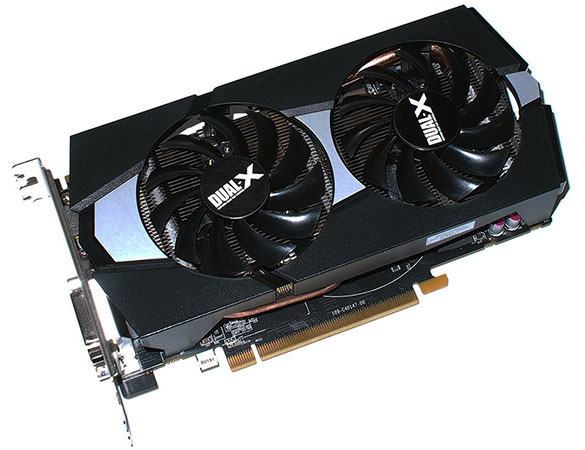AMD Radeon R7 265 Mainstream GPU Review
Introducing The Radeon R7 265
AMD is shaking up its mid-range graphics line-up today, by slashing the price of the Radeon R7 260X and introducing the more powerful Radeon R7 265. Though their model numbers are quite similar, the Radeon R7 265 is actually built around a beefier GPU than the 260X, and is more like the higher-end Radeon R9 270X.
AMD is positioning the Radeon R7 265 against NVIDIA’s GeForce GTX 650 Ti Boost. Stock on that GPU, however, has been drying up as of late, perhaps in anticipation of another new release aimed at the sub-$200 “sweet spot” of the graphics card market? We’ll know soon enough, but we’re getting ahead of ourselves. For now let’s take a look at AMD’s latest mainstream GPU and see how it stacks up to the competition available today...

AMD Radeon R7 265 Reference Card
|

If you take a look at its specifications, the Radeon R7 265 will look very much like a Radeon HD 7850. They’ve got the same number of stream processors and a similar memory configuration, though the peak engine and memory clocks are somewhat higher on the R7 265 (860MHz vs. 925MHz [GPU], and 5.4Gbps vs. 5.6Gbps [Memory]). Well, the two cards are in fact based on the same piece of silicon; the Radeon R7 265 has just been slightly tweaked and its branding is in-line with AMD’s latest naming convention.

The Sapphire Radeon R7 265 Dual-X
At the very top of the page here you can see what the reference Radeon R7 265 looks like, but most board partners will likely be introducing custom versions of the card. For testing purposes, we got our hands on a Sapphire Radeon R7 265 Dual-X, which as its name implies, sports a dual-fan cooling setup. The Sapphire Radeon R7 265 Dual-X features a relatively short 7.75” PCB, 2GB of GDDR5 memory linked to the GPU via a 256-bit memory bus, and a two-slot wide cooling solution that is nice and robust for a card this size.

That Is One Thick Heat Pipe Right There...
The cooler has a thick, heavy base, which covers both the GPU and memory, that is linked to dual aluminum fin stacks by a pair of chunky copper heat-pipes. Each fin stack is positioned under its own cooling fan. Sapphire’s Dual-X cooler seemed to do a good job keeping temperatures in check throughout testing and it was fairly quiet too. More on that a little later, though.

There's Not Much to See On The Back
Display outputs on the Sapphire Radeon R7 265 consist of a pair of DVI outputs, a single HDMI output, and a single, full-sized DisplayPort output. The card requires a single supplemental 6-pin power connection. Of course, the Radeon R7 265 supports almost all of AMD’s proprietary GPU technologies too, like PowerTune, CrossFire, and Eyefinity. The Radeon R7 265 has full support for Mantle and DirectX 11.2 as well, though TrueAudio support is absent.






